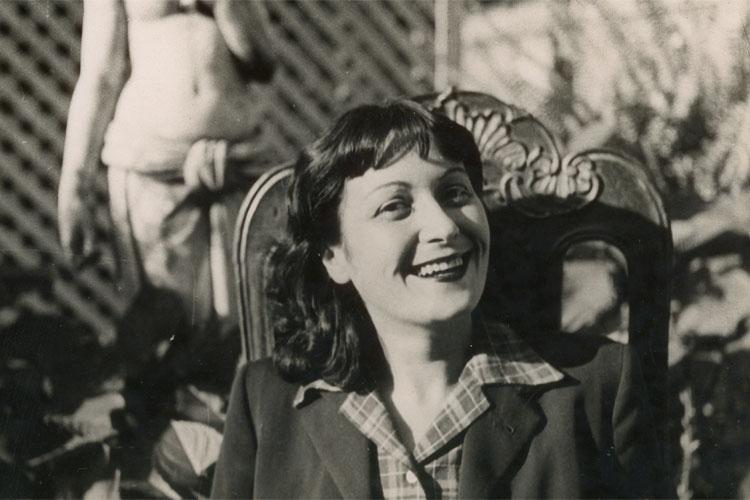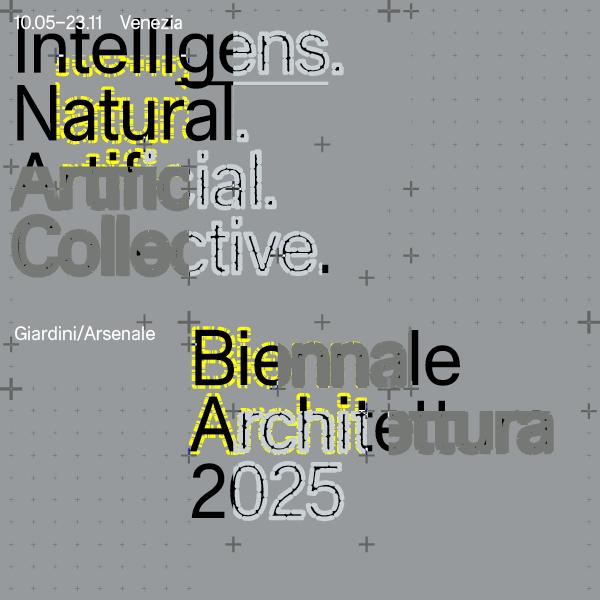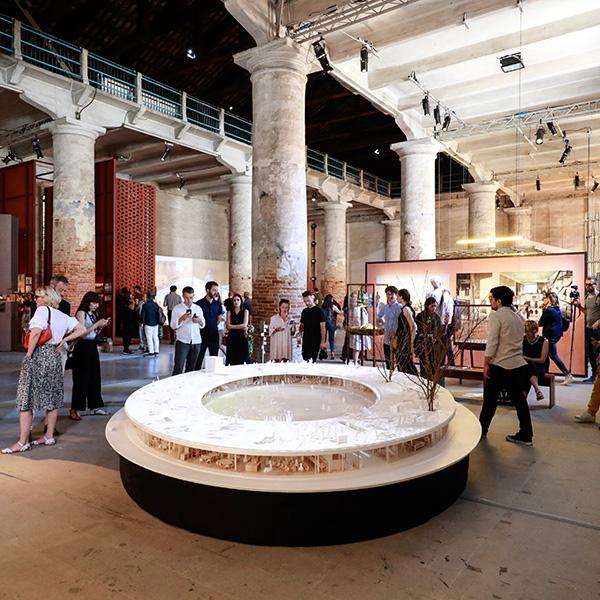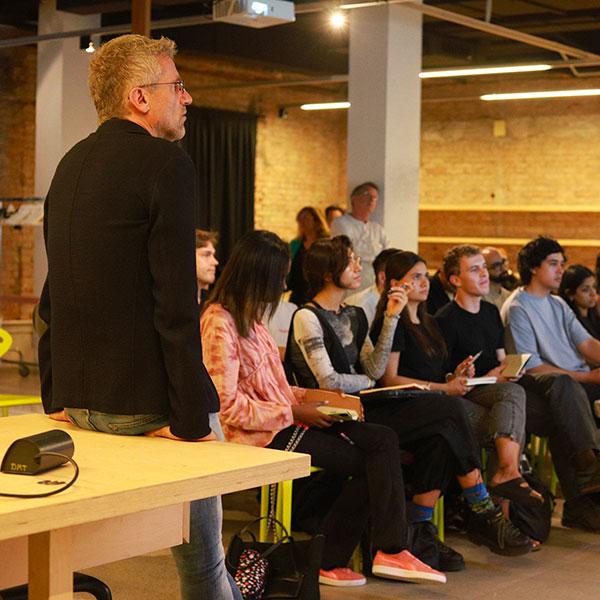
Lina Bo Bardi Special Golden Lion for Lifetime Achievement in memoriam
The acknowledgment to the Italian architect, designer, scenographer, artist and critic naturalized as a Brazilian citizen.
Special Golden Lion for Lifetime Achievement
in memoriam
Lina Bo Bardi, the Italian architect, designer, scenographer, artist and critic naturalized as a Brazilian citizen, is the recipient of the Special Golden Lion for Lifetime Achievement in memoriam of the 17th International Architecture Exhibition of La Biennale di Venezia, that will open to the public on Saturday May 22nd 2021 (preview May 20th and 21st).
The acknowledgment was recommended by Hashim Sarkis, curator of the Biennale Architettura 2021, and approved by the Board of Directors of La Biennale di Venezia.
In recommending this award, Hashim Sarkis expressed the following motivation:
«If there is one architect who embodies most fittingly the theme of the Biennale Architettura 2021, it is Lina Bo Bardi. Her career as a designer, editor, curator, and activist reminds us of the role of the architect as convener and importantly, as the builder of collective visions. Lina Bo Bardi also exemplifies the perseverance of the architect in difficult times whether wars, political strife, or immigration, and her ability to remain creative, generous, and optimistic throughout.
Above all, it is her powerful buildings that stand out in their design and in the way that they bring architecture, nature, living, and community together. In her hands, architecture becomes truly a convening social art.»
Just as one example, the design of the São Paulo Museum is exemplary in its ability to create a public space for the whole city, to create spaces inside that are flexible and to be open to experimental and more inclusive exhibitions such as Bo Bardi’s own exhibitions. The titles of these exhibitions alone, “The House as Soul,” “The Dignity of Architecture,” and “The Hand of the Brazilian People,” illustrate very strongly the power of architecture to bring people together.
The Special Golden Lion for Lifetime Achievement is a long overdue recognition for an illustrious career straddling between Italy and Brazil, for re-enlivening the role of the architect as an enabler of society, and for a woman who simply represents the architect at her best.»
Instituto Bardi from São Paulo, deeply honoured and grateful after learning about the award, stated:
«We thank La Biennale di Venezia for its vision in recognizing today a generous and multi-talented woman who has touched so many and will continue to inspire for many generations to come.»
«The phenomenal life and work of Lina Bo Bardi has long addressed the central question of this year’s International Architecture Exhibition: How will we live together? Sadly, as has been true for public spaces the world over, the global pandemic has undermined the use of the iconic public places she designed in Brazil that have been serving communities and citizens for decades. In that sense, the receipt of this prize reaffirms the responsibility that Instituto Bardi bears to transmit the importance of the Bardi’s couple’s lifelong work and archival materials to the public, thereby provoking meaningful discourse about the social role of the built environment.»
«We hope that the 2021 edition of La Biennale – rather than inflate her popularity as an architectural icon - will help to even better contextualize and communicate the depth of Lina Bo Bardi’s critical view of the world: always caring for the least culturally represented, consistently aware of the importance of diversity in art and architecture, and committed to a multidisciplinary approach to architecture bringing together people from all walks of life. »
«The 2021 Special Golden Lion resounds with the impact of the architect’s own words: Lina Bo Bardi’s life and oeuvre are not of the past, but still very much of the present. In fact, they seem more relevant today than ever before as markers of both architectural and human heritage.»
Achillina Bo, known as Lina, was born in Rome in 1914. Graduated in architecture in 1939, she moved to Milan where she met Gio Ponti. In 1944 she co-directed Domus with Carlo Pagani and with the support of Bruno Zevi she created the weekly magazine A-Attualità, Architettura, Abitazione, Arte. In 1947 Lina moved to Brazil with her husband Pietro Maria Bardi. Between 1957 and 1969 she built the Museu de Arte de São Paulo (MASP): a large concrete and glass parallelepiped that would become one of the most iconic buildings of Brazilian Paulista architecture. One of her most famous projects is her home in São Paulo, the Casa de Vidro, a Modernist glass box built on a hill immersed in the tropical forest. Between 1977 and 1986 she designed the SESC–Fábrica da Pompéia, a giant community, recreational, cultural and sports centre. Between 1980 and 1994, she worked on the Teatro Oficina, which upended the spatial hierarchies of bourgeois theatre. Lina Bo Bardi’s was the architecture of civil commitment, architecture understood as a collective service, free of the constraints of any school of thought; an architecture that was modern and ancient at the same time, popular, vernacular and cultured, artisanal and not industrial, respectful of tradition but innovative as well. Since her death in 1992, the memory and recognition of her work has been advanced by the Instituto Bardi.
The acknowledgment to Lina Bo Bardi will be celebrated on Saturday May 22nd 2021 during the inauguration ceremony for the Biennale Architettura 2021.
In the past the Special Golden Lion for Lifetime Achievement in memoriam was awarded to Japanese architect Kazuo Shinohara in 2010, upon recommendation by Kazuyo Sejima, curator of the Biennale Architettura that year.
Lina Bo Bardi's work was presented at the Biennale Architettura 2010 in a dedicated room of the Central Pavilion in the Giardini. Furthermore, an exhibition was dedicated to her at Ca' Pesaro, in the Metaeventi section in the context of the Biennale Architettura 2004.
Biographical notes
Achillina Bo, known as Lina, was an Italian architect, designer, scenographer, artist and critic naturalized as a Brazilian citizen. She was born in Rome in 1914. She graduated with a degree in architecture from the Università La Sapienza di Roma in 1939, and moved the following year to Milan, where her encounter with Gio Ponti would be fundamental to her. She wrote for architectural and lifestyle magazines, including Lo Stile founded in 1941 by Gio Ponti (along with the team composed of Gio Ponti, Enrico Bo and Carlo Pagani), Grazia, L’Illustrazione Italiana, Bellezza, Vetrina e Negozio, Cordelia and Tempo with the aim of spreading the culture of living promoted by the Modern Movement. In 1944 she co-directed Domus with Carlo Pagani. In 1945, the two (who had shared a studio in Via del Gesù 12, destroyed by the bombings in 1943), founded and directed the book series Quaderni di Domus and, with the support of Bruno Zevi, created the weekly magazine A-Attualità, Architettura, Abitazione, Arte. Lina Bo Bardi was a member of the Resistance and was one of the founders of the Movimento Studi Architettura (MSA).
In 1947, she and her husband Pietro Maria Bardi (critic, art historian, journalist and gallery owner) abandoned Italy and moved permanently to Brazil. Bardi had been invited by the journalist and newspaper magnate Francisco de Assis Chateaubriand to direct the Museu de Arte de São Paulo (MASP), for which Lina would design the façade in 1947 and the project for an addition between 1956 and 1968: a large concrete and glass parallelepiped that appears suspended in the void, 8 metres above ground, supported by two giant red pillars. The museum is conceived as a place designed for people, with its open spaces, moveable walls, transparent supports surrounded by relational gathering spaces that encourage social interaction. After its inauguration, the museum would become one of the most iconic emblems of Brazilian Paulista architecture.
She founded in 1950, together with her husband, a magazine with an emblematic name: Habitat. Her most famous objects include the Bowl Chair, designed in 1951, the Casa de Vidro, which she herself designed. The house was built on a hill and appears as a Modernist glass box immersed in the tropical forest, which over time has become completely integrated into the landscape. This work, like the MASP later and many other subsequent buildings and projects, highlights one of the major motifs in Bo Bardi’s poetics, which were far ahead of their time: the relationship between nature and architecture, which in her work are always configured as equal and complementary elements, which relate to one another in dialectic, or even osmotic, fashion. Today, the Casa de Vidro is the headquarters of the Instituto Bardi.
Bo Bardi would develop the theme of the single-family home on other occasions, such as the Casa di Valeria Cirell (1958) or the Casa do Chame-Chame (1959), unfortunately demolished in 1984.
In the late 1950s, Bo Bardi left to live and work for over five years in Salvador da Bahia, where she held a series of lectures at the School of Fine Arts of Bahia University in 1958. In addition to a great number of stage and set designs for the theatre, Lina Bo Bardi’s architectural work in Salvador includes the project to renovate Solar du Unhão and adapt it to be the seat of the new Museu de Arte Moderna da Bahia MAMB (Modern Art Museum in Bahia), the Museo di Arte Popolare (1959-1963), the Gregório de Matos theatre (opened to the public in 1986), the Casa do Benin (1987) and the restaurante Coatì in the Ladeira da Misericordia district (1987-1990).
In São Paulo, between 1977 and 1986, she designed the social center SESC – Fábrica da Pompéia, a giant community, recreational, cultural and sports centre, with theatres, libraries, workshops for photography, ceramics and other artistic activities, music studios and dance spaces, with basketball courts and other team sports, adapting, recuperating and intervening with new structures an old oil drums factory. Over the last ten years of her life, she worked on a myriad of projects aimed at the renewal of Brazilian architecture, including the Teatro Oficina (1980-1994), which upended the spatial hierarchies of bourgeois theatre: there were no more boundaries between the actors, positioned in a sort of long central corridor, and the audience which occupied a scaffolding structure placed above it. In this work Lina came closer than ever to the idea of architecture that she had explored and sought to implement throughout her career.
Lina Bo Bardi’s architecture was primarily the architecture of civil commitment, architecture understood as a collective service, free of the constraints of any school of thought; an architecture that was modern and ancient at the same time, popular (Amazonian, mixed race, Afro-Latin), vernacular and cultured, artisanal and not industrial, respectful of tradition but innovative as well. Since her death in 1992, the memory and recognition of her work has been entrusted to the Instituto Bardi.
The post-2008 crisis period brought the positions and themes explored by Lina Bo Bardi to the fore of the contemporary debate on culture, the environment, the historic heritage and the material production of architecture. Her contribution to the field of design, her method and the relevance of her research continue to our day to influence contemporary artists and designers.




